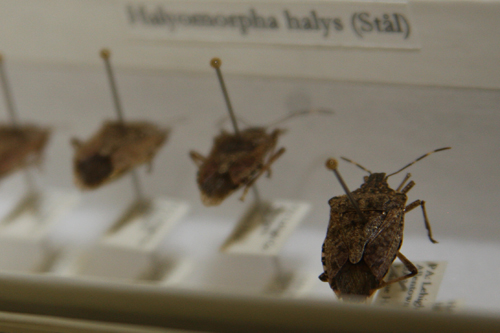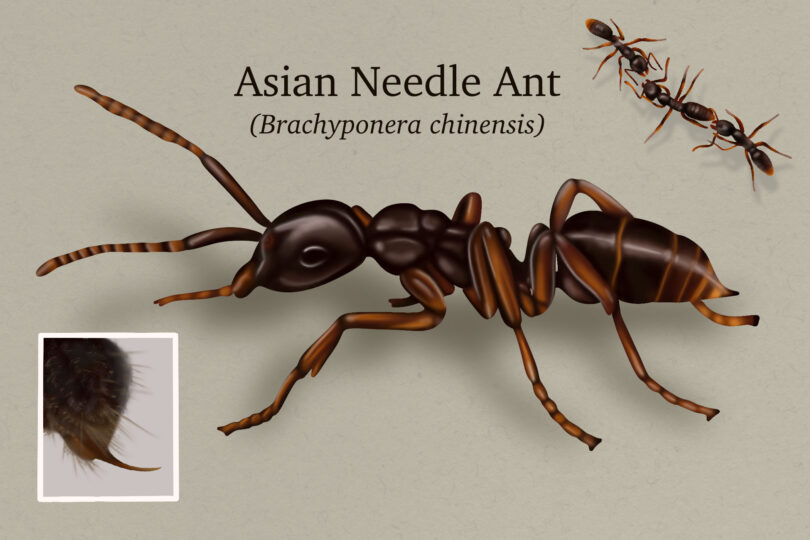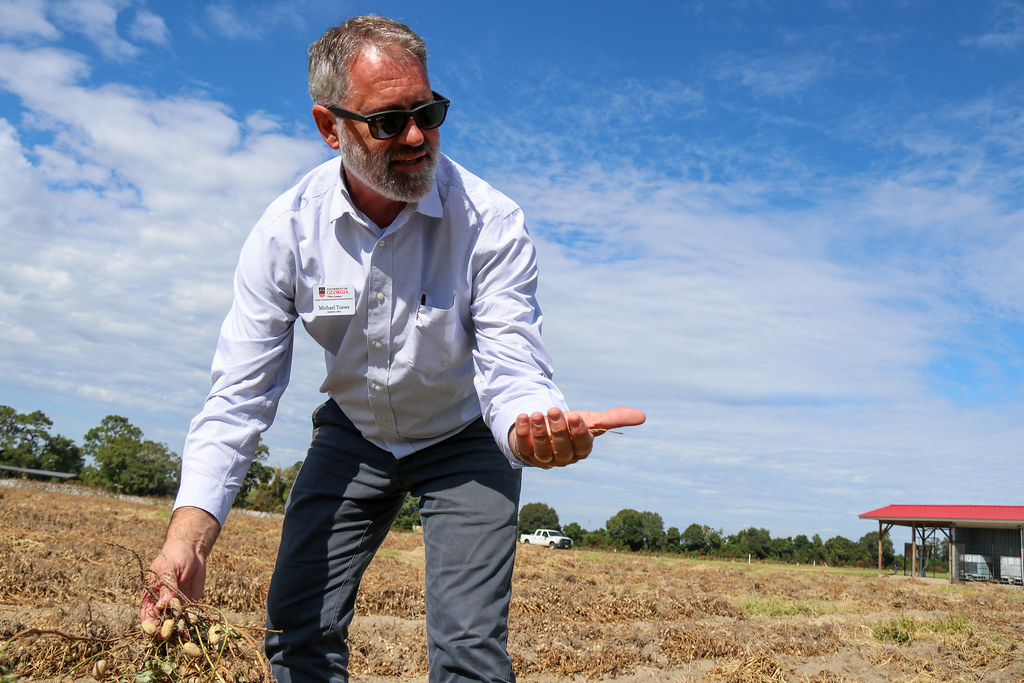More than 200 species of stink bugs call North America home. As many as 60 species live in Georgia. One more was recently discovered in southern South Carolina. The brown marmorated stink bug, or Halyomorpha halys, will likely soon invade Georgia, according to a University of Georgia entomologist.
“If people thought the invasion of the kudzu bug was bad, just wait,” said Rick Hoebeke, associate curator and manager of the insect collection at the Georgia Museum of Natural History.
The kudzu bug invaded Georgia in 2009. So called because it munches on the infamous kudzu, but it also like soybeans, a valuable Georgia crop. Like the kudzu bug, the brown marmorated is an invader, originating from Asia. It likely found its way to America on a freight container or smuggled in merchandise. Today it is reported in 33 states, including Oregon, California, South Carolina and Florida.
“This stink bug spreads very rapidly by either hitchhiking or through its own powers of dispersal,” Hoebeke said. “It’s one of the best hitchhiker pests I know of.”
Hoebeke recently left New York and Cornell University to join the department of entomology at the College of Agricultural and Environmental Sciences and the Franklin College of Arts and Sciences. He didn’t bring the bug with him, but he was the first entomologist to identify it in North America.
Discovered in 2001
A brown marmorated stink bug adult is half an inch long and dark mottled brown. Distinct light bands mark its antennae. Exposed areas of the abdomen are dark and light banded. Females lay clusters of light green, barrel-shaped eggs on the undersides of leaves. In Asia, four generations can be produced in a single season.
Georgia may be warm enough to foster three broods a season, meaning the population will increase faster than it has in Pennsylvania and Maryland.
First officially reported in Allentown, Pa. in 2001, its numbers soon escalated into the thousands, Hoebeke said.
“I went to Allentown to collect samples, and they were everywhere,” he said. “They were flying, crawling. People were sweeping them off their porches into large buckets by the hundreds.”
Pest of people
Fall could draw these insects inside homes. Temperatures that dip into the 40s push insects indoors, according to Dan Horton, an entomologist with UGA Cooperative Extension.
“Bugs behave not that dissimilar from you and me. If you need a jacket or heavy long-sleeved shirt, creatures will be looking to warm-up too,” Horton said. “We are not too far from a cold snap of having them looking to head inside.”
If you do find them indoors try not to squash them. As their name implies, they emit stink. “This is a much larger stink bug than the kudzu bug and is more likely to have more of a gross-out factor for homeowners who find the intruder in their living room,” Horton said. “Homeowner encounters will be the first source of our concern.”
Pest of food
The stink bug will look for food sources beginning next spring.
“In the Asian literature, the insect is a nuisance pest as well as an agricultural pest because of its propensity to feed on numerous vegetable and row crops, and fruits and ornamentals,” Hoebeke said. “It has the potential to be a threat to Georgia’s agricultural industry if established populations reach large numbers as in the North. They have sucking mouthparts to feed on fruits causing the fruit to dimple and the flesh to rot.”
In 2010, Maryland and Pennsylvania reported serious damage to apple and grape harvests.
“This is like the invasion of the kudzu bug II, a small, curious little creature, which can be bad if you have 700 in your house, but it could be a bigger problem if it feeds on our agricultural products,” Horton said.
Cross the border
When this newest stink bug does cross the stateline, citizen scientists can help. Both Hoebeke and Horton want to document the establishment and spread of this invasive species in Georgia and to alert proper agricultural authorities with up-to-date information.
Send digital images of a suspected stink bug to rhoebeke@uga.edu. Ship specimens in a crush-proof container to E. R. Hoebeke, Collection of Arthropods, Georgia Museum of Natural History, University of Georgia, Athens, Ga., 30602.
To prepare the insect for the trip, capture one alive, place it in a container and put it in the freezer to kill it. Then carefully wrap and mail it. Please include the city or town the stink bug was collected in, date of collection and contact information.









